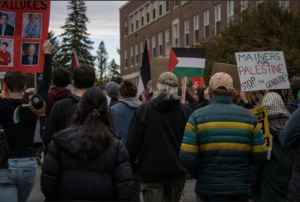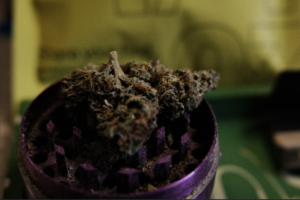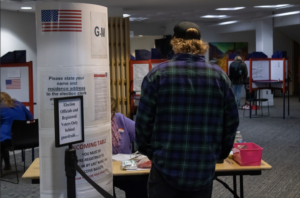Last Tuesday in Atlanta, a white man shot and killed eight people, six of them Asian American women, and much of the response across social media seemed to follow a familiar routine of condemnation and information, thoughts and prayers followed by infographics and statistics. Calls for social justice from allies across social media over the last year, while generally rooted in good intentions, have often been labeled as performative, or “slacktivism”. To take full advantage of social media as an activist platform, well-meaning users ought to start thinking a little more critically about the purpose behind what goes on their Instagram stories.
On Saturday, crowds of activists gathered in Atlanta, San Francisco, Houston, New York and various other communities across the country to march and rally in response to the shootings that targeted three Atlanta-area massage parlors. While authorities have not concluded that the killer’s motivation had to do with race, the tragedy has become a flashpoint for national condemnation, in the streets and online, of the uptick in hate incidents and racist rhetoric against Asian Americans since the outset of the COVID-19 pandemic.
Stop AAPI Hate (AAPI standing for Asian American Pacific Islander), a nonprofit that tracks incidents of hate and discrimination against Asian Americans and Pacific Islanders in the United States, received reports of 3,795 hate incidents between March 2020 and February 2021, which their report clarifies “represent only a fraction of the number of hate incidents that actually occur.”
While many Asian Americans have been afraid to leave their homes for fear of becoming another statistic, social media has been an equally hostile environment.
According to a Harvard study published in the American Journal of Public Health, analysis of discourse on social media platforms from October 2019 to March 2020 revealed increases in sinophobic, or anti-Chinese, slurs. The New York Times reported that use of racists slurs for COVID-19 on sites and apps like Telegram and 4chan rose in December and that anti-Asian sentiment on Twitter has followed the rhetoric of conservative leaders like Donald Trump with hashtags like #gobacktochina and #makethecommiechinesepay.
One of the benefits of the flood of condemnation, grief, and support on social media that follows nationally publicized tragedies like that in Atlanta is that, however briefly, hateful and prejudiced sentiments are overwhelmed by advocacy in the form of calls to action, infographics, links to organizations to which users can donate, and various other media. However, these responses can also expose the danger of mass-mediated activism.
An extreme but useful example is the response to the shooting by 88rising, a media company that promotes Asian hip-hop musicians. The post was simply a yellow square with the caption beginning with “Enough is enough.” This was, of course, an ill-advised attempt to mimic the black squares that many users shared on social media platforms for Blackout Tuesday, which was a campaign in response to the death of George Floyd last May.
The backlash from Twitter users against 88rising was swift, and the company took it down to post a hasty apology soon after. While the company likely had good intentions, it not only invoked the harmful “Yellow Peril” stereotype that dates back well into America’s xenophobic history but copied a campaign that was widely criticized for drawing attention away from useful and important information from the Black Lives Matter movement in favor of posting countless, useless black squares.
Professor Pamela Hovland, a senior critic of graphic design at Yale who teaches courses on visual representations of protest and activism, suggests that so-called performative activism should be viewed as part of individuals learning how to situate their place and actions within a larger movement.
“I think that [#BlackoutTuesday] was more powerful in the end because of the critique that resulted from it,” Hovland told the Yale Daily News. “If you were someone that gave over to that quickly … and then heard about that critique afterward, it caused you to think: What am I doing in addition to this? Am I donating to the cause? Am I speaking to other people about this offline?”
Part of the reason that posts regarding social justice issues are often characterized or regarded as performative or virtue signaling is because it is simply a superficial, performative medium. The fact of the matter is that an Instagram story doesn’t lend itself to sincerity, so while it is a good start for disseminating news and information, it is not a key to meaningful action.
On Friday, University of Maine students and faculty gathered informally on campus in response to the tragedy in Atlanta to write out phrases of solidarity in chalk on the sidewalks across campus. One might regard this as no more different than a post to one’s story, as an impermanent, easy-to-ignore, symbolic gesture. However, the one difference, and it is significant, is that those chalk messages are tangible, embedded in the campus, however impermanently. Like an Instagram post, it’s not the answer, but if it’s followed by critical thought and conversations within the community, then it’s a decent place to start.









